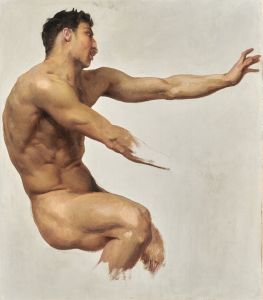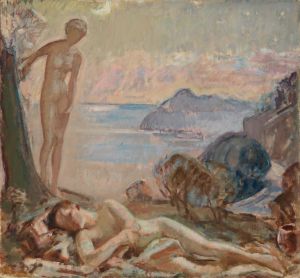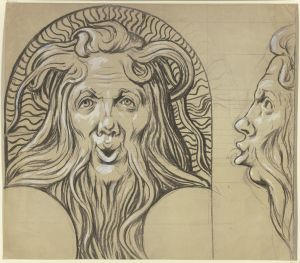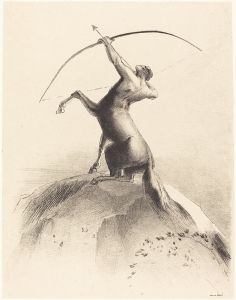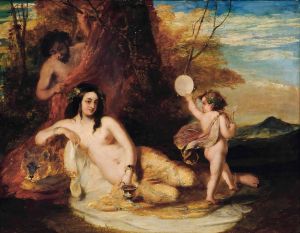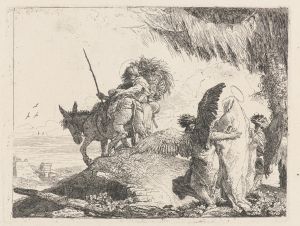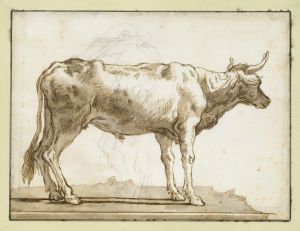
A Centaur and a Satyr
A hand-painted replica of Giovanni Domenico Tiepolo’s masterpiece A Centaur and a Satyr, meticulously crafted by professional artists to capture the true essence of the original. Each piece is created with museum-quality canvas and rare mineral pigments, carefully painted by experienced artists with delicate brushstrokes and rich, layered colors to perfectly recreate the texture of the original artwork. Unlike machine-printed reproductions, this hand-painted version brings the painting to life, infused with the artist’s emotions and skill in every stroke. Whether for personal collection or home decoration, it instantly elevates the artistic atmosphere of any space.
Giovanni Domenico Tiepolo's A Centaur and a Satyr is a work by the Venetian artist, who was the son of the renowned painter Giovanni Battista Tiepolo. Domenico Tiepolo (1727–1804) was known for his versatility and skill in both fresco and canvas painting, as well as his prolific output of drawings and prints. His works often explored mythological, religious, and genre themes, blending the grandeur of the Baroque with the lighter, more playful elements of the Rococo style.
The painting A Centaur and a Satyr depicts two mythological creatures, a centaur and a satyr, engaged in a dynamic interaction. The centaur, a half-human, half-horse figure from Greek mythology, is often associated with themes of duality, representing both the civilized and the untamed aspects of human nature. The satyr, a creature from Roman and Greek mythology, is typically portrayed as a follower of Dionysus, embodying revelry, music, and hedonism. The interaction between the two figures in this painting reflects Tiepolo's interest in classical mythology and his ability to infuse such scenes with a sense of movement and vitality.
Tiepolo's handling of light and shadow, as well as his fluid brushwork, are evident in this piece. The composition demonstrates his mastery of creating a sense of depth and drama, characteristics that were hallmarks of his artistic style. The figures are rendered with a sense of anatomical precision, yet they also possess a certain theatricality, which was a common feature of Tiepolo's mythological works.
The exact date of the painting's creation is not definitively documented, but it is consistent with Tiepolo's mature period, during which he produced numerous works inspired by classical antiquity. The painting is believed to have been part of a series or collection that explored various mythological themes, a subject matter that was highly popular among patrons of the time.
As of now, the painting is held in a private collection, and its provenance has been traced through various sales and exhibitions. It has been studied by art historians as an example of Domenico Tiepolo's ability to reinterpret classical themes with a unique blend of humor, elegance, and technical skill.
No further detailed information about the commission, original location, or specific historical context of A Centaur and a Satyr is currently available.





